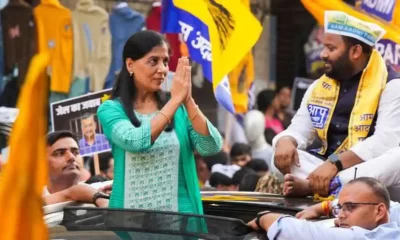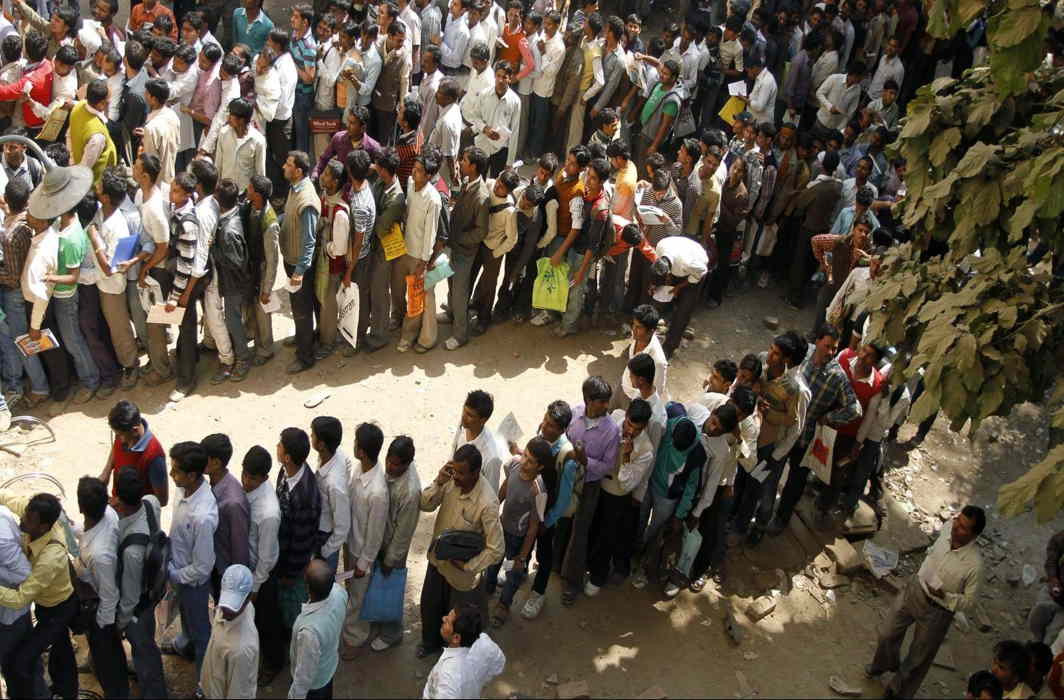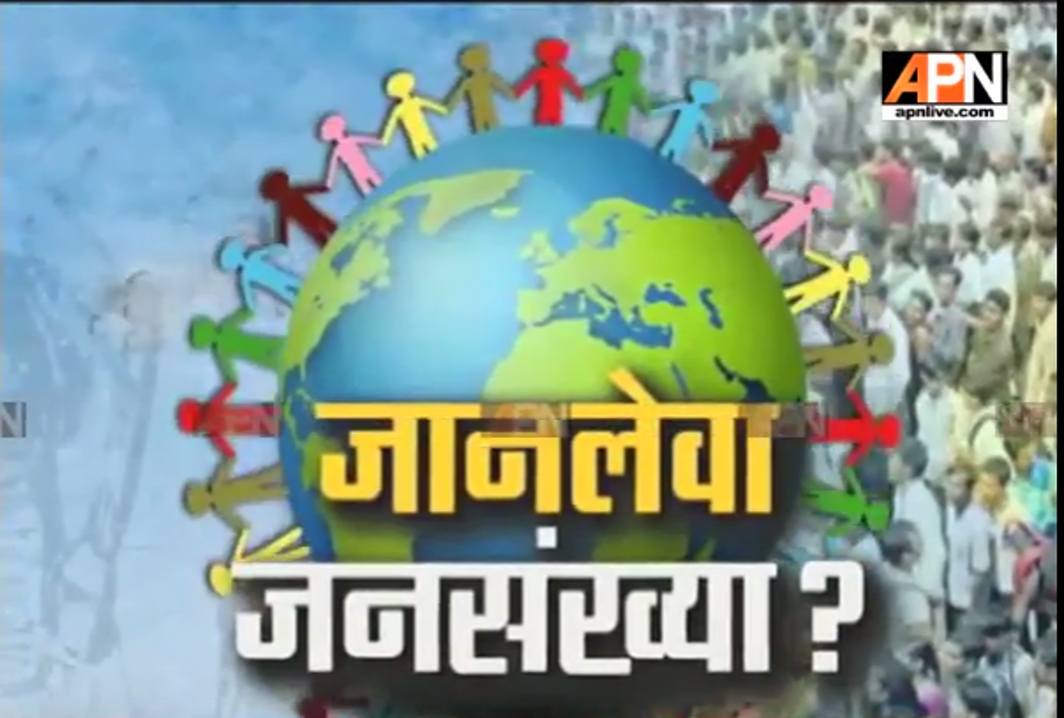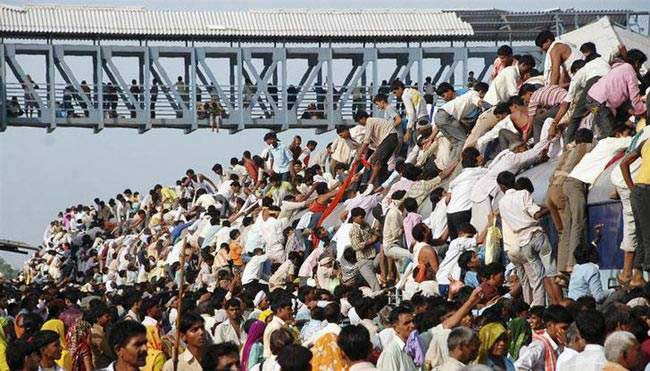Blogs
Manya Harsha, an Environmental Influencer from Bangalore is making the world more Sustainable with her Eco-friendly Vegetable Paper.
India has always been a home to many inspiring eco-warriors who are spreading the word and motivating the masses to join them in their movements for climate action.

India has always been a home to many inspiring eco-warriors who are spreading the word and motivating the masses to join them in their movements for climate action.
Manya Harsha a 6th grader at Vibgyor High BTM Bangalore, is one such sustainability influencer to gain inspiration and to learn from her , more about eco-friendly living.
Have you ever heard of Onion Papers? Papers made out of onion peels? Garlic peels? Potatoe peels? Peas? Corn? Here is a 10 year old Young Recycler who is busy recycling every day kitchen waste into an eco-friendly Paper each day!
As we all know India is a country of huge population. The Indian cuisine is the most appreciated for its spicy flavors. And when we talk of spices, Onions and Ginger-Garlic hit the lines. On an average every household in India generates around 300 grams of Vegetable waste on a daily basis. If this waste is properly utilized, We can do wonders!
We have all come across bio enzymes and compost But this is something totally new! 10 year old Manya’s idea to Generate A PAPER everyday from your daily kitchen waste is something unique!
The10 year old Recycler strongly believes that “Nothing in this world is a waste until you consider it to be a waste! ” Manya successfully utilized her time in lockdown making Eco-friendly Paper out of daily vegetable waste.
As we all know that recycling a ton of paper we can save 20 trees, 7,000 gallons of water, three cubic yards of landfill space and 30 kilograms of air pollutants.
Recycled paper reduces energy and helps stop deforestation.
India, With around 1.3 billion population, generates an average of 1000 gms of kitchen waste per day, if everyone starts recycling vegetable peels into paper, each one can contribute to the lessening of Ecological crisis. Paper and deforestation is a very common problem the world is facing. If we could generate paper at home , from our kitchen waste, the paper shopping will definitely be cut down
8 trees are sacrificed for 1000 pounds of paper! Now with around 10 onion peels, I can make 2 A4 size papers.. Just like every drop counts, every single bit of eco friendly products help to combat the global ecological crisis. The impact may not be huge in the start, but definitely it ignites for a sustainable future.
A 1/2 kg of Peas husk can make 3 A4 size sheets! 2 -3 babycorn husk makes around 2 A4 size sheets ! ( approximately)
These colorful vegetable papers are just like any other handmade paper. You can write, draw, paint, fold and create art out of it.
All it takes is the responsibility, time and patience. Most importantly the urge to do ones bit for the waste management.
Waste Management is one of the current crisis which every city, every country is facing. Especially in a country like India, with a huge population, Waste Management is an issue.
“Born and brought up in Bangalore, I see the beautiful Garden city slowly turned down by heap Garbage dumped on the roadside and how the quantity of waste is increasing every passing day has been a matter of huge concern. Especially during the festive season, the market is full of flowers, veggies, fruits, mango-bannana plants. But post festival, the market turns out to be a dump yard of leftovers! This scenario always had made me to think for a permanent solution as to how , the flower and plant waste can be utilized in an Eco friendly manner, ” explains Manya about the reason for her innovation.
Manya has taken up a lot of unique initiatives towards the environment .One such being, creating paper from kitchen waste. Getting ideas which are unique such as making paper out of kitchen waste isn’t a common thing. Not every child can think so creatively and uniquely. This initiative could lead to a big service to the society if scaled up. Every year millions of Trees are cut for making paper. If this initiative to make paper from vegetable waste can be made a household activity for all children, we may be able to reduce usage of papers manufactured from cutting of Trees. The idea is just a beginning, it could become a huge revolution if encouraged.
If you closely take a look into this project, its 0% investment. Instead you are creating WEALTH OUT OF WASTE ! The vegetable waste which was supposed to be dumped in the garbage yard is our raw material! I use totally organic materials in the making. Except for boiling and grinding, the usage of electricity is also less and negligible. With proper papermaking mesh frames some water, here we come out with the ECO FRIENDLY PAPERS ! Home made! No stinch of the waste, colorful and attractive!
Manya also being a young writer and a conservation volunteer promotes green living on her blogs. She campaigns for sustainable future by living an example herself. She recycles and creates eco friendly papers from every day kitchen waste. As a young writer, her book focuses on environmental or nature inspired theme.
Nature our Future, The Water Heroes, Once Upon A Time in 2020 , being the latest. Being honored with title GRANDMASTER from Asia book of RECORDS, Manya has set the record as the YOUNGEST POET OF INDIA 2019 , in Vajra book of RECORDS, India book of Records, Golden book of Records, World book of RECORDS India, Exclusive world RECORDS, Karnataka ACHIEVERS book of RECORDS. Manya is the YOUNGEST KANNADA AUTHOR, with her books Neerina Putani Samrakshakaru and Ondanondu kaladalli 2020( lockdown nenapugalu) making a huge name among the readers. Manya is also honored with the title YOUNGEST ANIMATED SHORT STORY MAKER, from India Book of Records for making animated short stories to spread awareness amongst the masses.
Manya is very confident about her innovation and says, it can definitely turn out to be a startup at ones home.
Each individual can produce their own paper at home.
-Manya Harsha
“Instead of chopping trees for paper, let’s recycle the kitchen waste to ECOFRIENDLY VEGETABLE PAPER. Let’s all together join hands to RESTORE OUR EARTH”
Apart from this, at a very young age of 8, Manya took the lead in raising awareness for saving water through calling for a kids walkathon in the local community. Manya has volunteered many #planttree Campaign and recently called out for a virtual #EachOnePlantOne Campaign, through which she successful inspired 46 people to plant trees and be a part of the Campaign.
She distributed paper bags to local vendors, so as to reduce usage of plastic & raised awareness among the trading community regarding the ill effects of plastic to our planet.
Disturbed over the mess created by tourists visiting the Markonalli Dam water bed in yediyur, Manya along with her father embarked on a mission to clean the area. She has been urging people to use dustbins and not to throw garbage in the lake.” AT TIMES EVEN A SINGLE HAND CAN DO WONDERS as Every drop counts! “says Manya. On this World Water Day ,UN WATER has also lauded the young girl’s efforts on their official Facebook page.
She has been honored with the THE WATER HERO
ES award 2020 by the ministry of JAL Shakthi for her contribution to spread awareness to conserve water.
Manya is also the young author of Nature themed books, Nature our Future, The Water Heroes, Once Upon A Time in 2020, being the latest . Being honored with title GRANDMASTER from Asia book of RECORDS, Manya has set the record as the YOUNGEST POET OF INDIA 2019, in Vajra book of RECORDS, India book of Records, Golden book of Records, World book of RECORDS India, Exclusive world RECORDS, Karnataka ACHIEVERS book of RECORDS. Manya is the YOUNGEST KANNADA AUTHOR, with her books Neerina Putani Samrakshakaru and Ondanondu kaladalli 2020( lockdown nenapugalu) making a huge name among the readers. Manya is also honored with the title YOUNGEST ANIMATED SHORT STORY MAKER, from India Book of Records for making animated short stories to spread awareness amongst the masses. Manya is also the Founder and Editor of the Digital kid’s journal SUNSHINE FORTNIGHTLY.
Read Also: New Zealand beat India by eight wickets in WTC Final, Kohli suffers 3rd loss as captain in ICC events
At such a young age these are no ordinary achievements. She is a motivation, not just for other students but also for us, adults.
She is a young achiever in all aspects and is a role model for the society.
Blogs
Fueling Rural Entrepreneurship: Small Business Loans Revolutionizing Rural India

New Delhi (India), July 15: Rural areas form the backbone of India’s economy, with a vast population engaged in agriculture and small-scale enterprises. However, accessing financial resources to fuel rural entrepreneurship has traditionally been challenging. Small business loans have emerged as a powerful tool in revolutionizing rural India, providing much-needed capital to aspiring entrepreneurs and driving economic growth. In this blog, we will explore how small business loans are transforming the rural entrepreneurial landscape, fostering innovation, creating employment opportunities, and uplifting rural communities.
Encouraging Agripreneurship and Diversification:
Agriculture-based businesses are the lifeline of rural India. Small business loans enable rural entrepreneurs to venture into agripreneurship and diversify their agricultural activities. These loans facilitate investments in modern farming techniques, equipment, and infrastructure, enhancing productivity and profitability. Additionally, entrepreneurs can explore value-addition opportunities, such as food processing, organic farming, and agricultural services, creating new revenue streams and reducing dependence on traditional farming practices.
Promoting Rural Micro, Small, and Medium Enterprises (MSMEs):
Micro, small, and medium enterprises (MSMEs) play a crucial role in rural development and employment generation. Small business loans cater specifically to the needs of rural MSMEs, providing financial support for business expansion, technology adoption, and market diversification. These loans enable entrepreneurs to establish and grow businesses in sectors such as handicrafts, textiles, cottage industries, and rural tourism. By promoting rural MSMEs, small business loans contribute to the overall socio-economic development of rural communities.
Bridging the Infrastructure Gap:
Rural areas often face infrastructure challenges, such as inadequate transportation networks, limited access to electricity, and lack of storage facilities. Small business loans address these issues by enabling entrepreneurs to invest in infrastructure development. Whether it’s setting up rural warehouses, cold storage units, or transportation services, these loans empower entrepreneurs to bridge the infrastructure gap. Improved infrastructure not only facilitates the growth of rural businesses but also attracts investments, creates employment opportunities, and enhances the overall quality of life in rural areas.
Empowering Women in Rural Entrepreneurship:
Small business loans are empowering rural women to break gender barriers and participate actively in entrepreneurship. These loans provide financial support to women entrepreneurs, enabling them to start businesses, acquire assets, and access markets. Additionally, loan programs often incorporate skill development and capacity-building initiatives tailored for women entrepreneurs. By encouraging women’s participation in rural entrepreneurship, small business loans contribute to gender equality, women’s empowerment, and the economic progress of rural communities.
Strengthening Local Supply Chains and Market Linkages:
Small business loans play a vital role in strengthening local supply chains and market linkages in rural India. Entrepreneurs can utilize these loans to enhance their production capabilities, improve product quality, and establish robust distribution networks. By connecting rural businesses with larger markets, these loans enable entrepreneurs to access better pricing, expand their customer base, and increase their profitability. Strengthening local supply chains not only boosts rural businesses but also promotes sustainable economic growth and reduces rural-urban migration.
Small business loans have emerged as a powerful force in revolutionizing rural India. By fueling rural entrepreneurship, these loans promote agripreneurship, boost rural MSMEs, bridge infrastructure gaps, empower women, and strengthen local supply chains. As more entrepreneurs in rural areas gain access to capital, they contribute to economic growth, employment generation, and the overall development of rural communities. It is imperative for financial institutions, government agencies, and other stakeholders to continue expanding small business loan programs and providing targeted support to rural entrepreneurs. Through these efforts, we can unleash the full potential of rural India and build a more inclusive and prosperous nation.
Blogs
January 2023 starts with positive prospects for the price of gold

Even in 2023, many traders share an interest in gold, not just because this is one of the most popular precious metals, but also thanks to the accessibility of gold (or other gold derivatives) trading. With growing political uncertainty, 2022 ended on a disappointing note for bulls, but 2023 is a whole other story, and prospects seem to be more optimistic.
Past performance should not be treated as a 100% accurate forecast tool, but there are a few variables that gold bulls should keep in mind, moving into 2023.
Seasonality
The first of these variables is seasonality, and the good news is that January continues to be the most suited month for the price of gold to rise, based on data going back to 1972. More specifically, the average monthly returns in January are estimated at 1.6%, followed by 1.0% in February.
During the last several months, central banks around the world increased their gold reserves at an irregular pace, as a result of geopolitical factors. Once Russia started the war on Ukraine, assets held by high-ranking businessmen and Russian institutions were seized. This makes liquid assets such as US Treasuries less attractive, especially when it comes to countries that have an antagonistic view compared to the USA.
Peak USD bullishness?
According to data available on the website of Easymarkets, gold is trading at around $1,800 after a slow but steady recovery, beginning November 2022. This is a result of peaking USD performance against other currencies.
The FED hiked rates fast, which meant flows favoring the Dollar, and that in turn did not act as a tailwind for gold. Now that the USD has seemingly paused its rally, gold has more room to go up, unless risk aversion once again becomes dominant in the market.
In terms of macroeconomics, US inflation is already slowing, while Europe and Japan seem to be lagging by at least a few months. The same goes for economic conditions, which can be seen deteriorating worldwide. That is not supportive of a continued rise of inflation and at some point, it could be a reason for the FED to pivot and start cutting interest rates.
Interest rates
When plotting the price of gold on top of US Treasury rates, a negative correlation can be spotted. Rates up lead to gold going down and since the market is already anticipating a peak in tightening, government bonds are set to rise in 2023.
That means interest rates have less upside potential, supporting a continued rise in the gold price as the year starts. Remember that all financial assets, regardless of risk profile, are sensitive to interest rates, because they affect market liquidity, as well as the discounting effect for future returns.
There are no certainties when predicting where gold will be at the end of January, but if seasonality, the US Dollar, and interest rates act as a confluence of positive factors, the first month of 2023 can continue the precious metal’s rise.
Blogs
An Insight Into Legality Of Horse Racing Betting In India

Regarding gambling, few countries have such a long and fascinating history as India. Horse racing is one of India’s most popular forms of betting and has been for centuries.
Horse racing betting is an activity loved by locals and fantastic entertainment, highly valued internationally. The industry employs millions of people, including jockeys, trainers, and grooms, and fills stadiums worldwide with passionate punters.
However, there are still many questions about whether or not online horse betting is legal in India. To try and understand more about the legalities involved and get an insight into horse racing betting in India, more generally, has become more critical than ever before. In this article, we take a look at some of these issues to clear up any confusion that may arise when considering wagering on equine events in the nation.
What is the Legal Status of Horse Racing Betting in India?
The legal status of horse racing betting in India is complicated. While it is considered legal and regulated, certain restrictions apply to the activity.
For example, online betting on horse races is not allowed, and only approved physical racecourses are permitted to offer this service. Additionally, specific regulations have been put in place by the Central Government’s Ministry of Home Affairs, which states that any form of gambling or wagering must occur within a licensed premise or area.
This means that even if you were to find a way to bet on a horse race online, you would still be required to visit an authorized racetrack or facility to do so physically. Fortunately, you can check our recommended sites for betting on horse races in India, which are approved by the government and operate within the confines of the law. The listed websites are reliable and secure, allowing you to place bets without the worry of any legal repercussions.
Therefore, while it is possible to bet on horse racing in India legally, the activity must be done within a licensed and regulated environment.
How Can I Bet on Horse Racing in India?
If you’re looking to place a bet on a horse race in India, the best way to do so is by visiting the nearest licensed racetrack. Here, you will be able to find one of the many bookmakers available and get started with your betting.
When placing a bet at the track, it is essential to remember that you must be 18 or over to participate and that all bets must be made in Indian Rupees (INR). Before placing any wagers, it is also essential to familiarise yourself with all applicable laws. It is also important to note that any winnings from horse racing betting must be declared and taxed accordingly.
Horse Racing vs. other forms of gambling
Horse racing betting is a form of gambling which has been around for centuries and is seen as one of the most popular forms in India. In comparison to other forms of gambling, such as casino games or sports betting, horse racing betting offers a much more traditional and social experience.
In addition to this, because it is only allowed at licensed racetracks, it is also considered safer than other forms of online gambling, which the government does not regulate.
Cricket betting is also hugely popular in India, with many people wagering about the outcome of cricket matches. While this form of gambling has been legalized in recent years, it is still considered illegal if done online. This means that cricket betting must be done through licensed bookmakers at physical premises or racetracks.
Tips for Horse Racing Betting in India
When betting on horse racing in India, there are a few tips that you should keep in mind.
- Choose Your Racetrack Carefully – Not all racetracks are created equal, so choosing the best suits your needs is crucial. Research the track’s history and review any reviews or ratings.
- Do Your Research – Before placing a bet, do your research and get to know the horses you are betting on. Look at their past performances and find out about their trainers and jockeys.
- Set a Budget – Gambling can be an addictive activity, so it is vital to set yourself a budget and stick to it. This will help ensure you don’t overspend and stay within your means when betting on horse races in India.
- Understand the Odds – Before placing a wager, it is essential to understand the odds. This will help you make an informed decision and ensure you get the best value for your money.
- Utilise Technology – Take advantage of technology and use apps or websites to track results, compare odds and get tips on which horses are likely to perform well in upcoming races.
- Check the rules and regulations of the racetrack you’re visiting to ensure that your bets are within the limits and guidelines.
Following these tips ensures that your horse racing betting experience in India is safe and enjoyable.
General requirements to take part in Horse Racing Betting in India
To take part in horse racing betting in India, you must be 18 or over and have an Indian ID that can be used to verify your age. Additionally, you will need to provide proof of residence and a valid credit/debit card for online transactions.
Furthermore, it is essential to remember that all races are governed by the rules and regulations of the track in which they are held, so it is necessary to familiarise yourself with these before placing any bets. Also, it is essential to note that horse racing betting is only allowed at licensed racetracks, so it is necessary to check the licensing status of any track you visit.
Conclusion
In conclusion, horse racing betting in India is legal and regulated, but certain restrictions apply to the activity. To ensure a safe and enjoyable experience when placing bets, it is important to familiarize yourself with all relevant laws and regulations and do your research before wagering on any horses. Additionally, choose your racetrack carefully and set a budget, so you can avoid overspending or get into financial difficulty.
-

 Education9 hours ago
Education9 hours agoPhysics Wallah founder gets invited as speaker to Harvard, Stanford Universities, post goes viral
-

 2024 Lok Sabha Elections6 hours ago
2024 Lok Sabha Elections6 hours agoMallikarjun Kharge says candidates for Amethi, Rae Bareli seats in Uttar Pradesh will be announced in a few days
-

 Cricket news13 hours ago
Cricket news13 hours agoIPL 2024: Punjab Kings beat Kolkata Knight Riders by 8 wickets to chase down highest T20 total
-

 2024 Lok Sabha Elections11 hours ago
2024 Lok Sabha Elections11 hours agoSmriti Irani takes a swipe at Rahul Gandhi for calling Amethi his home but contesting Lok Sabha elections from Wayanad
-

 2024 Lok Sabha Elections8 hours ago
2024 Lok Sabha Elections8 hours agoPriyanka Gandhi accuses BJP of planning to change the Constitution, criticises PM Modi for inflation
-

 2024 Lok Sabha Elections5 hours ago
2024 Lok Sabha Elections5 hours agoSunita Kejriwal holds maiden Lok Sabha election roadshow in Delhi




